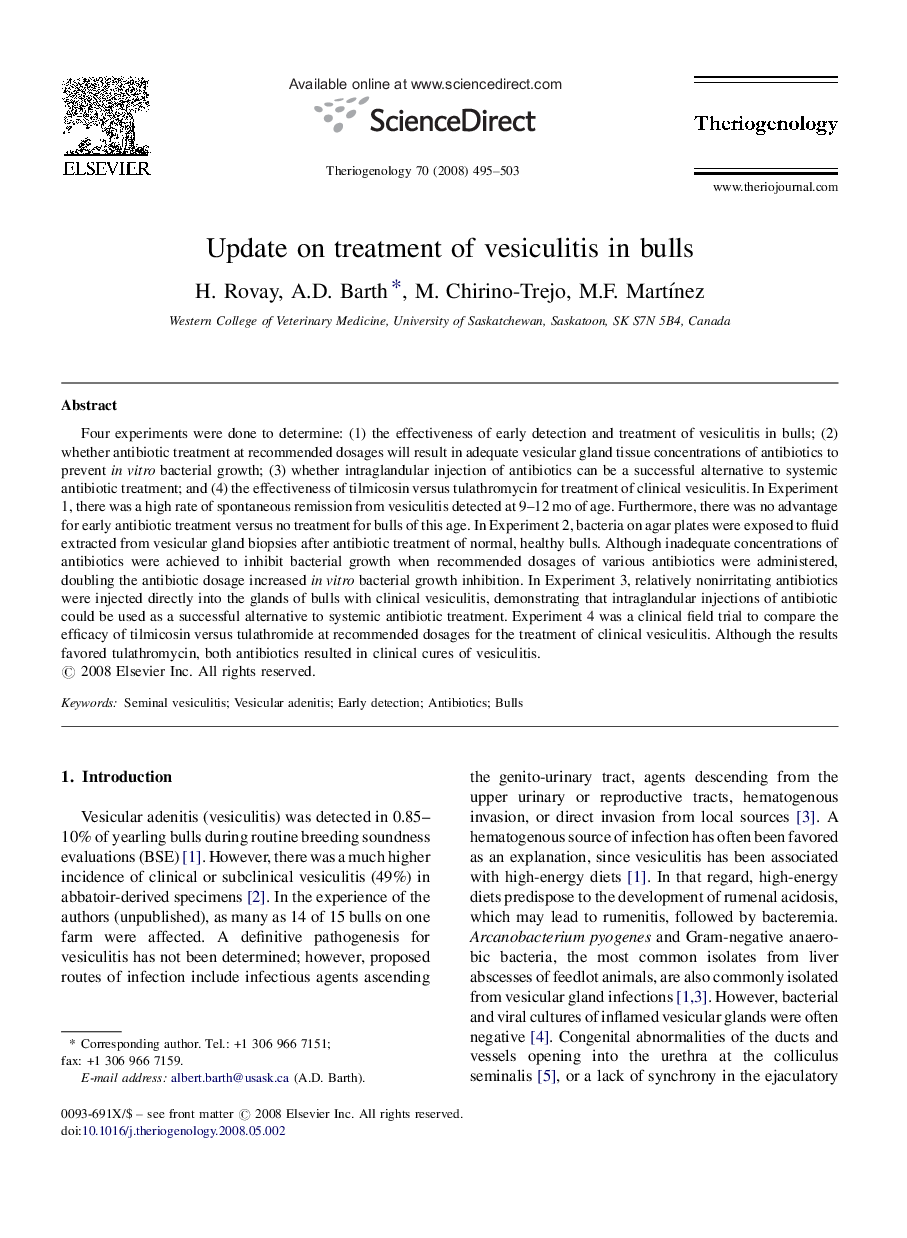| Article ID | Journal | Published Year | Pages | File Type |
|---|---|---|---|---|
| 2095817 | Theriogenology | 2008 | 9 Pages |
Four experiments were done to determine: (1) the effectiveness of early detection and treatment of vesiculitis in bulls; (2) whether antibiotic treatment at recommended dosages will result in adequate vesicular gland tissue concentrations of antibiotics to prevent in vitro bacterial growth; (3) whether intraglandular injection of antibiotics can be a successful alternative to systemic antibiotic treatment; and (4) the effectiveness of tilmicosin versus tulathromycin for treatment of clinical vesiculitis. In Experiment 1, there was a high rate of spontaneous remission from vesiculitis detected at 9–12 mo of age. Furthermore, there was no advantage for early antibiotic treatment versus no treatment for bulls of this age. In Experiment 2, bacteria on agar plates were exposed to fluid extracted from vesicular gland biopsies after antibiotic treatment of normal, healthy bulls. Although inadequate concentrations of antibiotics were achieved to inhibit bacterial growth when recommended dosages of various antibiotics were administered, doubling the antibiotic dosage increased in vitro bacterial growth inhibition. In Experiment 3, relatively nonirritating antibiotics were injected directly into the glands of bulls with clinical vesiculitis, demonstrating that intraglandular injections of antibiotic could be used as a successful alternative to systemic antibiotic treatment. Experiment 4 was a clinical field trial to compare the efficacy of tilmicosin versus tulathromide at recommended dosages for the treatment of clinical vesiculitis. Although the results favored tulathromycin, both antibiotics resulted in clinical cures of vesiculitis.
